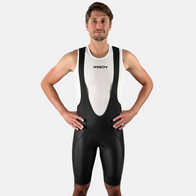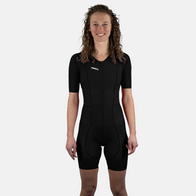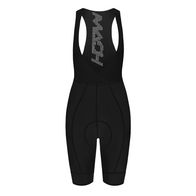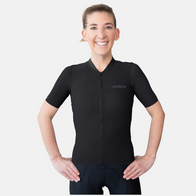
The Top 5 Triathlon Smartwatches
Price, features and information you need to know to choose the best triathlon watch for your training and racing adventures.
So, you’re looking to upgrade your watch for your next big racing venture, but not sure where to start? That’s understandable! With all of the different watches on the market and companies like Garmin, Suunto and Polar releasing new models every year, it can be overwhelming to wade through the mounds of models, features and new tech included with each of the different brands.
Never fear, we’ve got your back! We did a deep dive into all of the latest and greatest smart watch models and, after assessing cost, features and overall value, have resurfaced with our top five favorites.
Cost: $549.99
Perks:
- While looking pretty dang similar to the Garmin 935, has been considerably revamped from its predecessor;
- Sync with your Spotify to download playlists and you can ditch the phone while still jamming to your favorite tunes during training;
- Equipped with Garmin Pay (so you don’t have to fret about forgetting your wallet at home);
- Comes with new Elevate HR monitor, which provides significantly more accurate HR information for the data nerds out there (what triathlete isn’t though?);
- Battery life is strong as well, with GPS mode with music lasting 10 hours, GPS mode alone lasting up to 36 hours and the Smartwatch itself lasting up to two weeks;
- Has built in maps, accident detection, like event sharing and many latest-generation Garmin features.
Faults: There isn’t much to dislike about this watch. Sure, it may be a bit bulky, but let’s be honest, all triathlon watches are bulky. This one gives the best functionality for the price, in our opinion.
Garmin Fenix 6 (also sold in the Pro and Sapphire Editions)
Cost: $449.99 (Pro edition, which includes music, Maps and WiFi, runs at $549.99)
Perks:
- The Fenix 6 is the next iteration of the Fenix 5 - and it shows.
- Improved functionality, battery life and overall usability of this model;
- Includes more user-friendly widget interface and built-in storage for music and Garmin Pay;
- One more benefit? It looks cooler than the 945 ;)
Faults: The Fenix is a tad bulkier than the 945, so may feel a bit heavier on the wrist. Other than that, the watch itself has a lot of the same functionality as the 945 with a bit lower price.
Cost: $279.93 (Oh yeah, you read that right!)
Perks:
- THE PRICE! All triathletes know how much your standard multisport watch costs (and it ain’t cheap), so the price tag alone makes this one worth considering;
- Beyond that, it has very good battery life (up to 30 hours in GPS training mode), is incredibly light and also offers some fun color choices for the wristband;
- Accurately measures swimming metrics both in the pool and open water;
- Boasts Precision Prime sensor technology, using nine sensors to accurately measure heart rate data.
Faults: The battery life in smartwatch mode is not great - only up to five days - and the lens is hardened plastic. Not the most quality, but at this price, can you really complain?
Cost: $269.00
Perks:
- Updated model of its predecessor, the Suunto Spartan Trainer, this watch has increased battery life to 20 hours in regular modes and up to 40 hours in extended modes;
- Also has HR tracking in the wristband and a smaller, sleeker design than its older brother, the Suunto 9;
- Budget-friendly model;
- Includes stress tracking, body battery, sleep quality and VO2 tracking metrics as well as adaptive training plans;
- Like most other watches, includes auto-syncing capability to the Suunto app and Strava.
Faults: In comparison to other Suunto models and leading smarwatches, the Suunto 5 does not have quite as much battery life and, according to some online reviews, has had some minor syncing and workout uploading issues. Otherwise, it is a cost-friendly and overall well-designed smartwatch for new and experienced triathletes alike.
Cost: $299.99
Perks:
- Never heard of them? That’s okay, we hadn’t either! Coros is a new smartwatch company out of China that is challenging competitors like Garmin and Suunto with their sleek design and excellent price point;
- Incredible battery life - reportedly lasting up to 35 hours in full GPS mode, up to 100 hours in UltraMax GPS mode and up to 30 days in smartwatch mode;
- The UltraMax GPS mode is fascinating - over the course of each 120 seconds, the GPS is switch on for 30 seconds and then utilizes its Intelligent Stride algorithm and motion sensors to calculate for the remaining 90 seconds;
- Screen resolution is also incredible and uses a Sapphire glass screen (much like some of the latest Garmin models).
Faults: It has a turn dial as a toggle between functions - a bit old school in our opinion and takes some getting used to - but it functions as well as any old button.
As you can see, most watch companies are updating their technologies left and right, and the major price differences come down to simple luxuries such as downloadable maps, music storage and in-depth recovery monitors. The question is - what’s your budget, and what are you willing to pay for some fun additions to the already-reliable brands we all know and love? The choice is yours!











